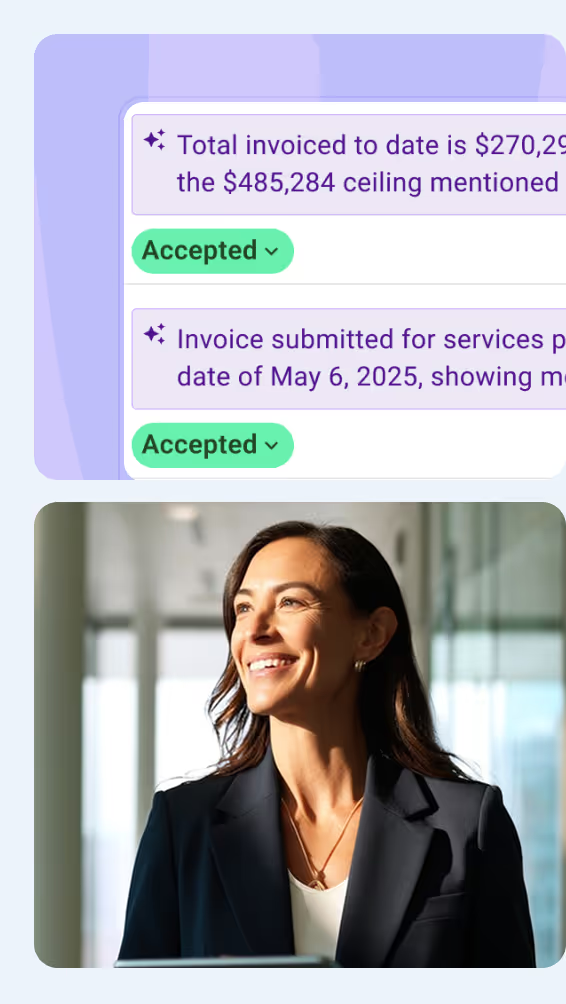Quantity surveyor's reports are critical for controlling construction costs, managing risk, and guiding financial decisions in construction projects. This article covers what these reports include, when to use them, and how different stakeholders rely on them. You’ll also learn how to create accurate reports step by step and improve efficiency using digital tools like Mastt.
What is a Quantity Surveyor's Report in Construction?
A quantity surveyor's report (QS report) outlines the total construction cost of a project, including materials, labor, and related expenses. The cost analysis is based on accurate measurements, market rates, and project specifications to support reliable financial planning.
Prepared by a qualified quantity surveyor, the QS report informs budgeting, contract decisions, and cost control strategies. This type of documentation plays a central role in quantity surveying, helping stakeholders maintain control throughout the project lifecycle.
What’s Included in a Construction QS Report?
A quantity surveyor's report in construction includes the essential cost and project data needed for informed decision-making. It delivers detailed breakdowns, technical inputs, and supporting documents tailored to the project phase.
Here are the core components found in most QS reports:
- Executive summary: High-level overview with key cost findings and recommendations
- Project scope: Clear definition of work included and excluded in the report
- Cost breakdowns: Itemized costs by trade, activity, or project phase
- Quantity measurements: Take-offs with material quantities sourced from current drawings
- Market analysis: Benchmark rates, pricing trends, and supplier data
- Risk assessment: Identified risks and suggested contingency amounts
- Supporting documentation: Drawings, specifications, calculations, and rate sources
A well-structured QS report transforms complex project data into clear, actionable insights. It equips stakeholders, including property investors and property owners, with information that supports stronger financial control across the project.
6 Types of Quantity Surveyor's Reports
The main types of quantity surveyor's reports are: Pre-Contract Cost Report, Tender Evaluation Report, Monthly Progress Cost Report, Change Control or Change Order Report, Cash Flow Forecast Report, and Final Account Report. Let’s take a closer look at each one.
1. Pre-Contract Cost Report
A Pre-Contract Cost Report supports early-stage planning during the design phase or tender phase. It includes a detailed cost plan, development cost estimate, and scope alignment check to ensure the design fits within budget. Project owners use this report to assess feasibility and secure funding before proceeding.
2. Tender Evaluation Report
The Tender Evaluation Report compares contractor bids and pricing submissions to identify the best-value offer. It outlines exclusions, clarifications, and risks to support transparent, informed decision-making. This report is critical for fair contract awards and procurement compliance.
3. Monthly Progress Cost Report
Monthly Progress Cost Reports track construction expenditure throughout project delivery. They cover progress payments, change orders, and updated forecasts. These QS reports support regular reporting and payment certification, keeping the project financially on course.
4. Change Control or Change Order Report
A Change Control or Change Order Report records all scope changes and their impacts. It includes cost implications, the reason for the change, and the effects on budget or timeline. This report supports formal change control and ensures accountability.
5. Cash Flow Forecast Report
Cash Flow Forecast Reports project construction costs over time, typically by month or quarter. They align forecasted spending with funding drawdowns or internal budgeting cycles. These reports are key tools for managing liquidity and financial planning.
6. Final Account Report
The Final Account Report is prepared after the completion of the construction project. It reconciles total costs, confirms all payments and contractual adjustments, and closes the financial record. Often used for audits and benchmarking, it marks the official close-out of the contract.

When are Quantity Surveyor's Reports Used?
Quantity surveyor's reports are used throughout the entire lifecycle of a construction project. They support project planning, procurement, delivery, and close-out by providing cost data, financial analysis, and reporting tailored to each stage.
Common points where QS reports are used include:
- Feasibility stage: Assess affordability and prepare early cost plans
- Design and tender phase: Align scope with budget and evaluate contractor bids
- Construction phase: Track construction costs, manage change orders, and approve monthly payments
- Change events: Document and assess financial impact of change orders
- Project close-out: Finalize costs and produce the final account
- Post-completion reviews: Benchmark costs for future projects or audits
The timing and frequency of reports often depend on project size, risk, and funding conditions. Some contracts require monthly updates or staged reporting tied to milestones. In complex projects, quantity surveyors may issue multiple report types at once to meet client or lender requirements.
Who Uses Quantity Surveyor's Reports
Quantity surveyor's reports are used by people responsible for managing cost, contracts, funding, or compliance on a construction project. These users span across delivery teams, consultants, clients, and financial stakeholders.
Key users of QS reports include:
- Project owners and developers: Make investment decisions and track budget performance
- Client-side project managers: Oversee delivery and ensure alignment between scope, budget, and contract terms
- Quantity surveyors and cost consultants: Prepare and review cost reports at each project stage
- Contract administrators: Manage payment requests, change orders, and contract obligations
- Lenders and financial institutions: Approve funding and assess project viability
- Government and public-sector clients: Monitor spending, ensure compliance, and review funding milestones
- Design and engineering consultants: Evaluate cost impacts linked to design and scope changes
- General contractors and subcontractors: Use cost data for pricing, coordination, and payment submissions
- Auditors and compliance teams: Review final reports for accountability and risk management
Because construction is highly collaborative, QS reports often influence several decisions at once. When multiple stakeholders depend on the same cost data, accuracy and clarity are critical to avoid disputes and financial risk.
How Much Does a Quantity Surveyor's Report Cost?
Fees for a quantity surveyor's report typically range between 1% and 4% of the total construction cost. For example, a project valued at $500,000 AUD may incur QS reporting fees between $5,000 and $20,000 AUD, depending on scope and complexity.
Common factors influencing QS report cost include:
📌 Note: QS fees are usually negotiated, especially for phased or multi-building projects. Clear deliverables help ensure fair pricing.
Cost also depends on whether reporting is in-house or outsourced. Outsourced QS reports often provide deeper analysis, especially for complex or high-value commercial or residential property projects.
How to Create a Quantity Surveyor's Report (Step-by-Step)
Creating a quantity surveyor's report means collecting current project data, validating it, and formatting it for stakeholders. The goal is to clearly show budget status, committed costs, payments, risks, and any changes since the last report.
The steps below outline how to produce a clear, accurate, and reliable quantity surveyor's report:
Step 1: Review Project Information and Define Scope
Begin with a thorough review of project plans, specifications, contracts, and any site-related documents. Define the report scope clearly, set timelines, and confirm the property investor’s or client's information needs from the outset.
Step 2: Conduct a Detailed Site Inspection
Inspect the property site to validate drawings and uncover cost-impacting conditions. Take detailed measurements and note factors like access, utilities, plant availability, and ground conditions that could affect construction costs.
Step 3: Calculate Costs Using Current Market Data
Use reliable cost estimation databases and current rates from local suppliers to build estimates. Include all relevant components such as labor, materials, equipment, overheads, depreciation schedules, capital allowance considerations, and profit margins.
💡 Tip: Use our construction cost estimating calculator to speed up data entry, adjust rates instantly, and get accurate totals fast and easy!
Step 4: Perform Quality Checks and Compile Report
Double-check all calculations for accuracy and consistency. Compile the quantity surveyor's report in a clear structure, ensuring each section supports the final conclusions with data and logic. Include depreciation schedules and property depreciation analyses if applicable.
Step 5: Present Findings and Support Client Decisions
Deliver the report with clear explanations and necessary documentation. Hold a review meeting to walk through findings and answer questions about methods, assumptions, or recommendations. Provide depreciation reports to property managers or property owners when necessary.

Quantity Surveyor's Report Example
A quantity surveyor's report typically follows a structured format to ensure clarity, accuracy, and usability across stakeholders. While the exact content may vary depending on the construction project phase and purpose, the quantity surveyor's report example below shows a standard layout.
- Project Overview: Project name, location, client details, report date, and purpose of the QS report.
- Executive Summary: Summary of key findings, recommendations, depreciation deductions, and overall cost position.
- Scope of Works: Description of what is included and excluded from the report, referencing relevant drawings, specifications, and contracts.
- Cost Breakdown: Detailed cost estimates grouped by trade, phase, or code, covering labor, materials, overheads, and contingencies.
- Quantity Take-offs: Measurement data for key components sourced from up-to-date drawings and verified site inspections.
- Market Analysis: Current pricing trends, supplier rates, commercial depreciation insights, and benchmarks.
- Risk and Contingency Assessment: Identified cost risks, their potential impact, and recommended contingency allowances.
- Change Orders (if applicable): List of approved, pending, and rejected change orders with cost and time impact.
- Cash Flow Forecast: Projected monthly or quarterly expenditure supporting funding or drawdowns.
- Appendices and Supporting Documents: Drawings, specifications, depreciation schedules, rate sources, and relevant correspondence.
Quantity surveyor's reports often follow this structure, but can be tailored to fit project or client needs. For example, lenders may request deeper risk analysis, while contractors focus more on cost breakdowns and change orders.
.avif)
Common Issues Found in QS Reports (and How to Avoid Them)
Outdated cost data is one of the most common issues in quantity surveyor's reports, but it's not the only one. Here are five frequent problems and how to fix them:
1. Using Outdated Cost Information: Using old cost data results in inaccurate estimates and unrealistic budgets.
✅ Solution: Keep cost databases updated, cross-check with current rates from local suppliers.
2. Incomplete Site Assessment: Failing to assess site conditions properly can cause unexpected construction costs and constructability issues.
✅ Solution: Always conduct detailed site visits, documenting conditions affecting construction methods or increasing costs.
3. Vague Scope Definition: A poorly defined scope creates confusion, disputes, and billing problems during construction management.
✅ Solution: Define scope clearly, including inclusions and exclusions, referencing drawings, specs, and contracts.
4. Poor Stakeholder Communication: Reports not matching client needs delay decisions.
✅ Solution: Align early on report format, required detail, and maintain communication throughout.
5. Missing Quality Control: Reports with errors or inconsistencies reduce trust and lead to disputes.
✅ Solution: Apply a clear quality control process, including peer reviews and final verification.
How Mastt Can Help with Quantity Surveyor's Report
Mastt helps quantity surveyors deliver faster, more accurate, and more consistent reports across all phases of a construction project. Our platform combines live cost tracking, automated reporting, and AI-powered tools to reduce manual work and improve decision-making.
The key benefits of using Mastt for quantity surveyor's reporting include:
- Real-time cost tracking: Monitor budgets, actual spend, and forecasts in one live dashboard
- Automated reporting: Generate consistent, audit-ready cost and progress reports using built-in templates
- Change order and contract management: Track change orders, approvals, and contract values with full visibility
- AI-powered efficiency: Use automation to extract data, update figures, and streamline repetitive tasks
- Collaborative workflows: Share live data with project teams to reduce miscommunication and delays
By replacing spreadsheets and disconnected tools, Mastt enables quantity surveyors to focus on analysis. The result is clearer, faster reporting that improves cost control and adds value to every project.
Smarter Quantity Surveying Starts with Better Reporting
Improving your quantity surveyor's reports starts with reviewing your current process. Check if your cost data is up to date, your scope is clearly defined, and your reports are aligned with stakeholder needs. Strengthening just one part of the process can improve decision-making and support better project outcomes.

















.avif)